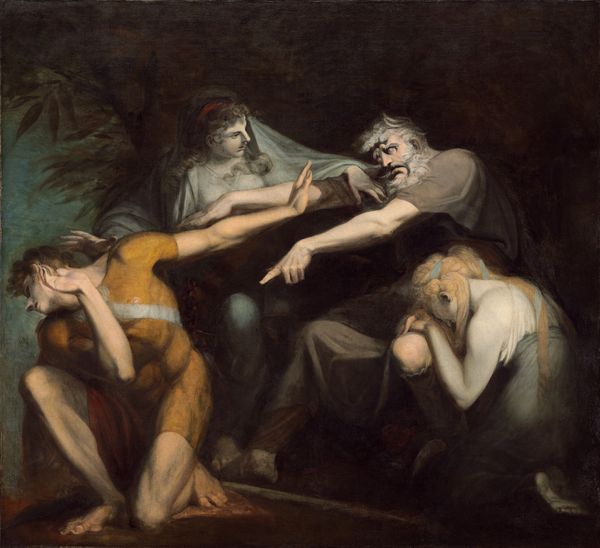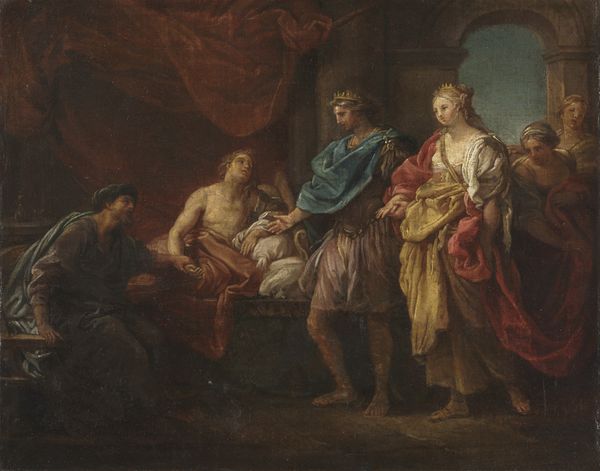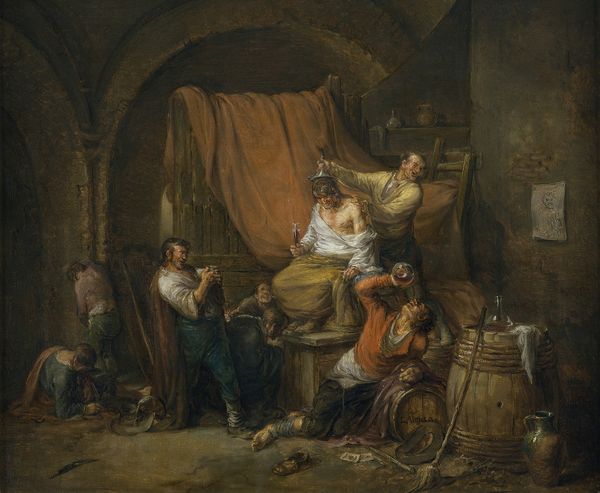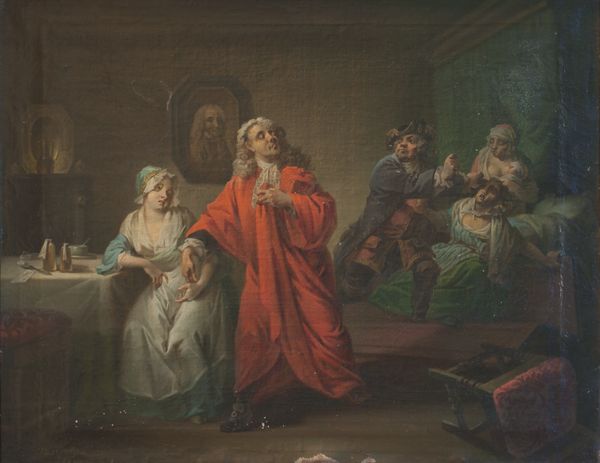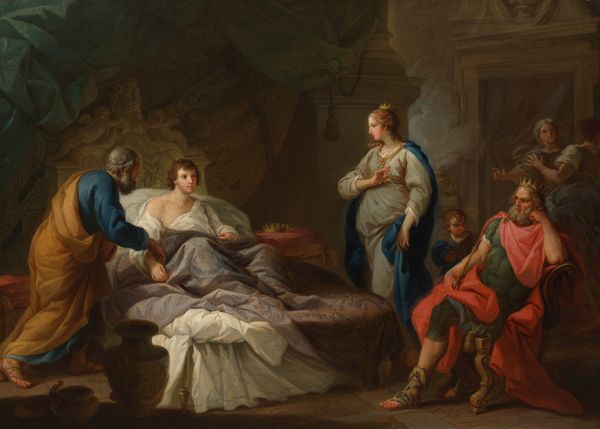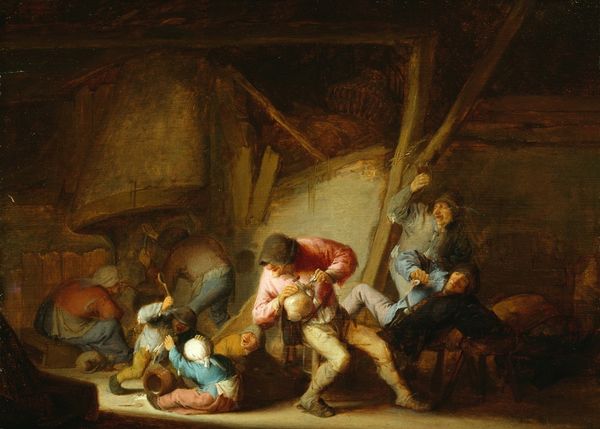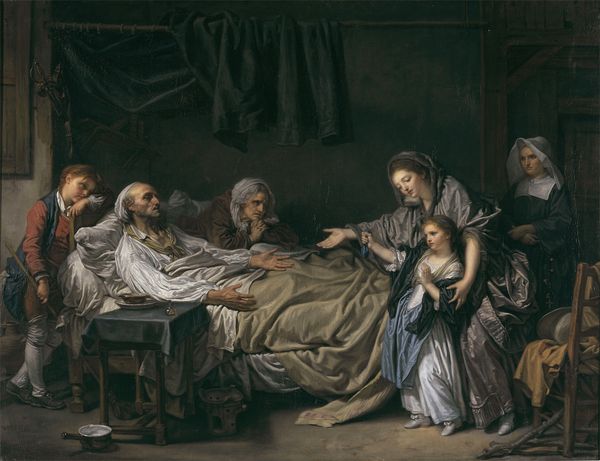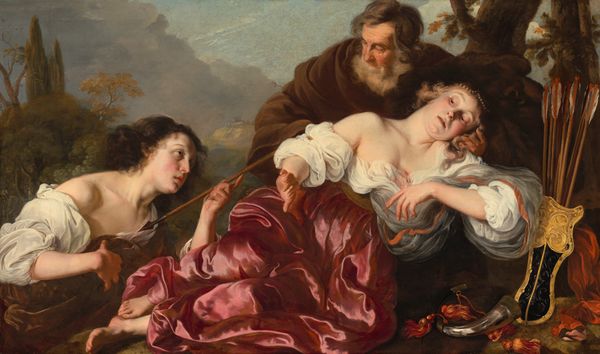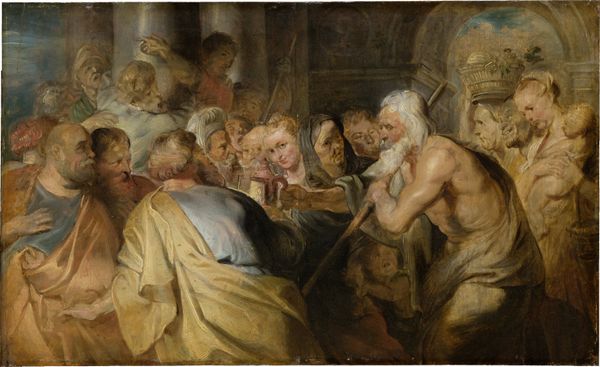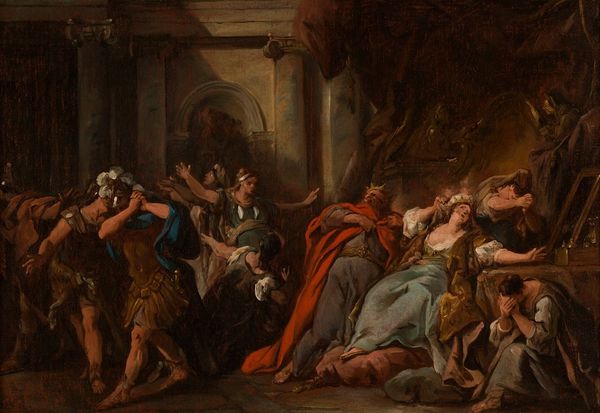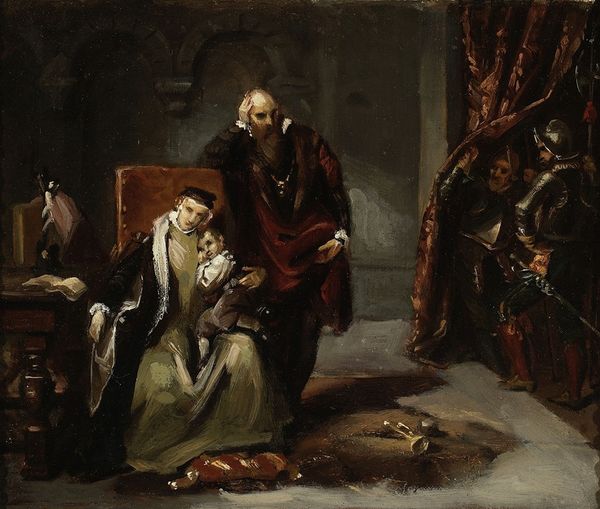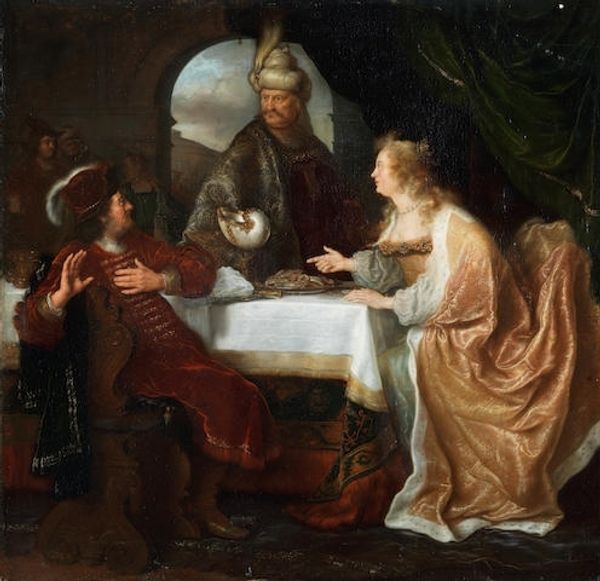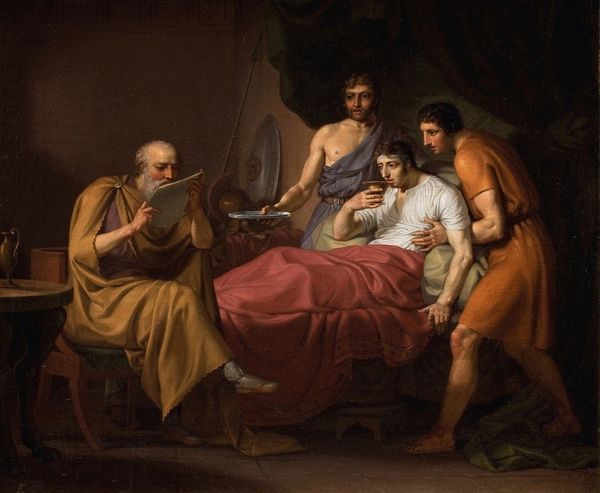
oil-paint
#
portrait
#
narrative-art
#
baroque
#
oil-paint
#
oil painting
#
chiaroscuro
#
history-painting
Dimensions: support height 115.2 cm, support width 140.2 cm, height 141 cm, width 165.5 cm, depth 10 cm
Copyright: Rijks Museum: Open Domain
Editor: Govert Flinck’s “Isaac Blessing Jacob,” created around 1638 with oil paint, certainly feels heavy with dramatic tension. The chiaroscuro amplifies that feeling. What can you tell me about how we should interpret it? Curator: Well, first off, it's crucial to see this painting not just as a representation of a biblical scene but also as a product of its time. Think about the Dutch Republic in the 17th century. This was a society grappling with its own identity, religious freedoms, and power dynamics. Consider the historical context, how does it reflect Dutch values and societal structures of the time? Editor: Hmm, that's interesting, I hadn't considered it in that light. What connections do you see? Curator: Look at the depiction of family dynamics here. The deception, the blessing... how does this reflect power structures in the family, and how might this have resonated with contemporary views on inheritance, patriarchy, and even religious authority in the Dutch Republic? And consider who had access to this type of artwork then? Who did it serve? Editor: So you’re saying we should consider who would be commissioning and viewing such a piece. It adds another dimension, understanding who it speaks to. Curator: Precisely! We must contextualize art within social systems. It forces us to confront complex power dynamics. Always ask, "Whose stories are amplified, and whose are silenced?". Editor: Okay, I think I understand. Considering the cultural and social elements definitely reframes how I view the artwork and opens up more lines of inquiry. Thanks! Curator: Absolutely. It enriches our perspective and lets us think critically. It’s not only looking at art, but seeing its impact.
Comments
rijksmuseum about 2 years ago
⋮
The Bible recounts how Jacob, pretending to be his brother Esau, tricked their blind father into bestowing Esau’s rightful blessing on him. The idea of imitating Esau’s hirsute arms by wearing animal-skin gloves came from their mother Rebecca, who looks on from behind the bed. Flinck derived both this painting technique and narrative style from Rembrandt, by whom he was trained.
Join the conversation
Join millions of artists and users on Artera today and experience the ultimate creative platform.
